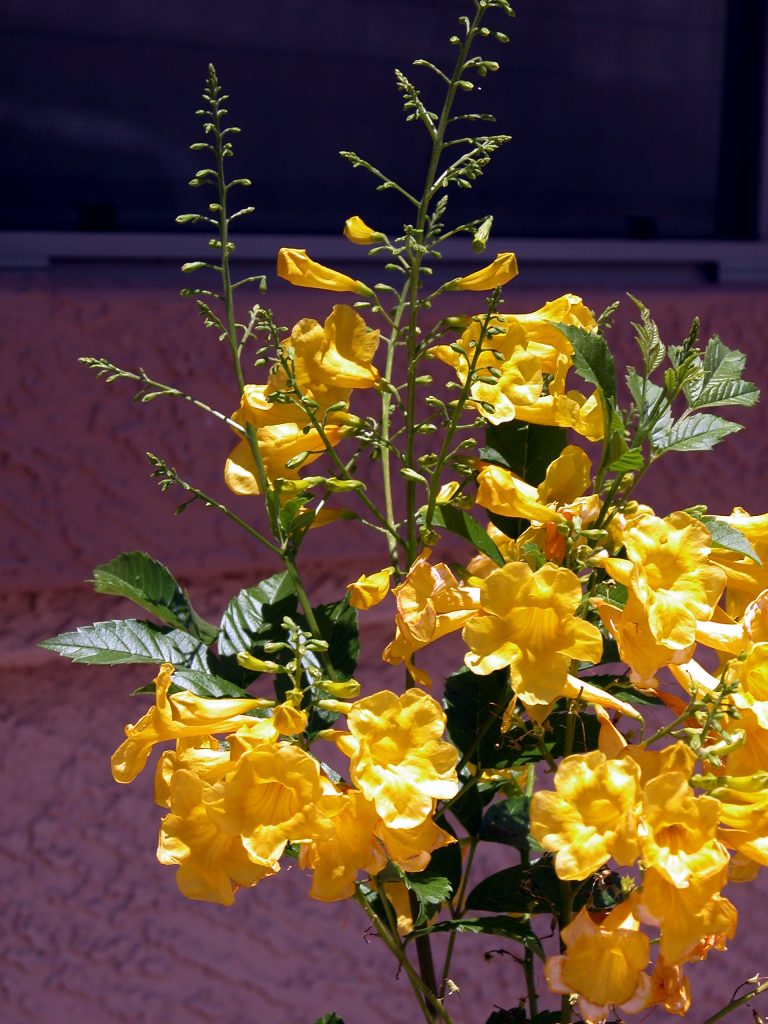Yellow Bells provide a burst of summer color to desert xeriscape gardens. Spectacular clusters of bright yellow, bell-shaped flowers attract hummingbirds and cover these large shrubs or small trees from April through November.
Pencil-like seed pods that develop in the fall provide food for over-wintering songbirds. The bright green foliage offers a cooling effect during the hot summer months. Yellow Bells can be used with more evergreen desert shrubs such as jojoba and Arizona rosewood to form a natural screen or barrier. They can also be used against walls where it is afforded some frost protection and is a good backdrop for Baja red fairy duster, desert marigold, or agave.
Yellow Bells and other Tecoma species can reach maximum heights in warm microclimates, but they typically mature to a smaller size when nipped by frost. Established plants can be regenerated by pruning the older branches to the ground every five years. Tecomas prefers a sunny location and some supplemental watering to look its best. Its size and form should be considered in its placement in the landscape.
Starting around 2012, Tecoma species started getting impacted by the larval stage (caterpillar) of a leaf-tier moth. The moth often infests the plants in the fall, and the signs include rolled leaves and webbing. See photos at this Arizona Plant Lady blog. Cut off infested parts or check with your nursery for organic or nontoxic pest control options.
Tecoma stans var. stans or Yellow Bells
Tecoma stans var. stans, the wider-leafed form of Yellow Bells, can be selectively pruned into a 25-foot-high tree in frost-free areas. The lush green foliage and dense clusters of bright yellow flowers of this variety impart a tropical effect to the landscape. Found throughout Central and South America, this tropical is best suited to frost-free microclimates. While evergreen in its native habitat, Tecoma stans var. stans may exhibit leaf drop during cold winters in the Phoenix area.
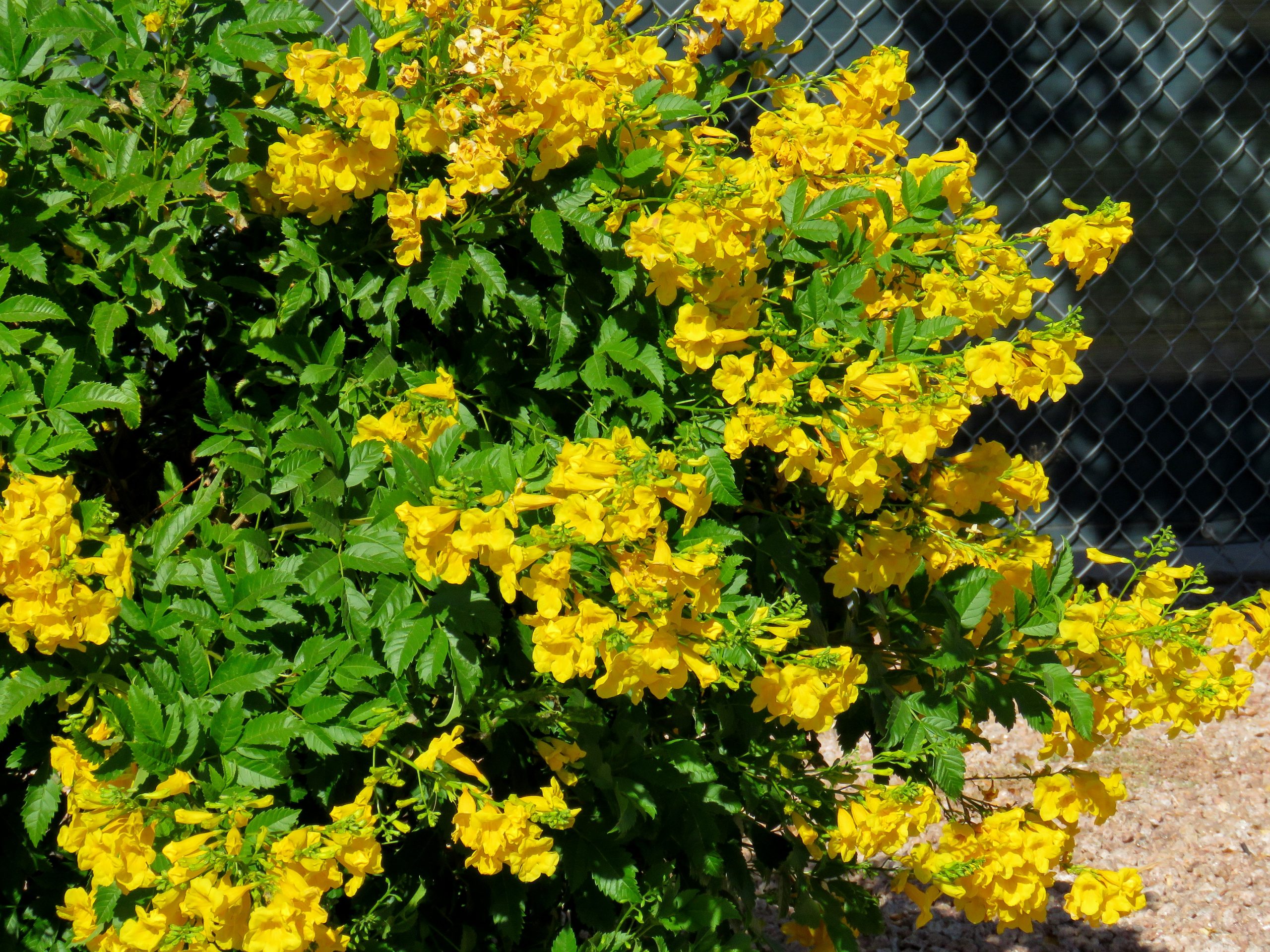
Tecoma stans var. angustata or Arizona Yellow Bells
Tecoma stans var. angustata is a narrow-leafed form of Yellow Bells, sometimes called yellow trumpet flower, that is commonly seen throughout the Chihuahuan Desert. Growing to about 10 feet high by 6 feet wide, this large deciduous shrub brightens up informal desert gardens. It is well adapted to the extremes of heat and cold in our desert environment. Like T. stans var. stans, it can be rejuvenated by pruning to the ground.
Tecoma X ‘Orange Jubilee’ or Orange Bells
This upright woody shrub has lush green leaves and produces masses of bright orange trumpet-shaped flowers from spring through fall. After flowering, a few long, narrow tan seed pods persist on the plant. It thrives in full and reflected heat exposures and loses some of its leaves in the colder months. It may be cut back as needed to remove frosted foliage and to generate fresh new growth. Be sure to give this hybrid plant some space as it grows rapidly, and plants can easily reach 12 feet or more in height and as wide as 8 feet.
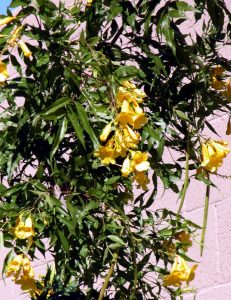
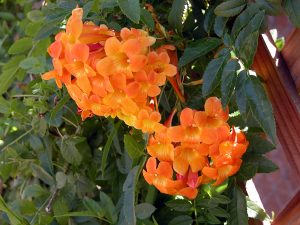
New Cultivated Varieties Available
In the last few years, breeders have introduced many new exciting colors, shapes and forms of Tecoma cultivars. Look for ‘Gold Star’, ‘Sunrise’, ‘Solar Flare’, ‘Bells of Fire’, ‘Sierra Apricot’, ‘Lydia’, and even ‘Sparky’ (sporting Arizona State University colors of red and gold). The best part is that many of these hybrids stay more compact and will work in more locations of your yard. Check with your local nursery to learn more about these beautiful shrubs that will add a burst of color to your landscape.
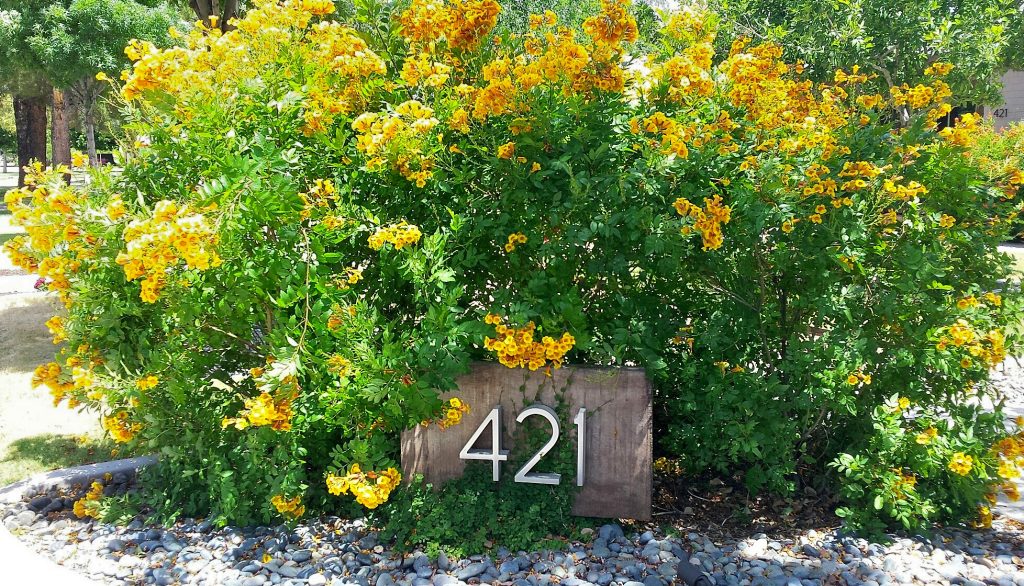
Did you know that up to 70 percent of water use is outdoors? That’s why we love desert plants and feature them each month. It’s still a great time to plant, and you can learn more about Tecomas and other plants on our Arizona Low-Water-Use Plants page. Visit our page on Choosing and Planting Low Water-Use Plants for tips on plant selection and how to plant properly. Also, be sure to read through all of our featured Plant of the Month blogs!
This feature is based on a concept and text originally developed jointly by the Arizona Nursery Association and the Arizona Municipal Water Users Association (AMWUA) with partial funding from the Arizona Department of Water Resources. Learn more about these and other great desert plants at the Arizona Municipal Water Users Association Landscape Plants for the Arizona Desert plant database.


